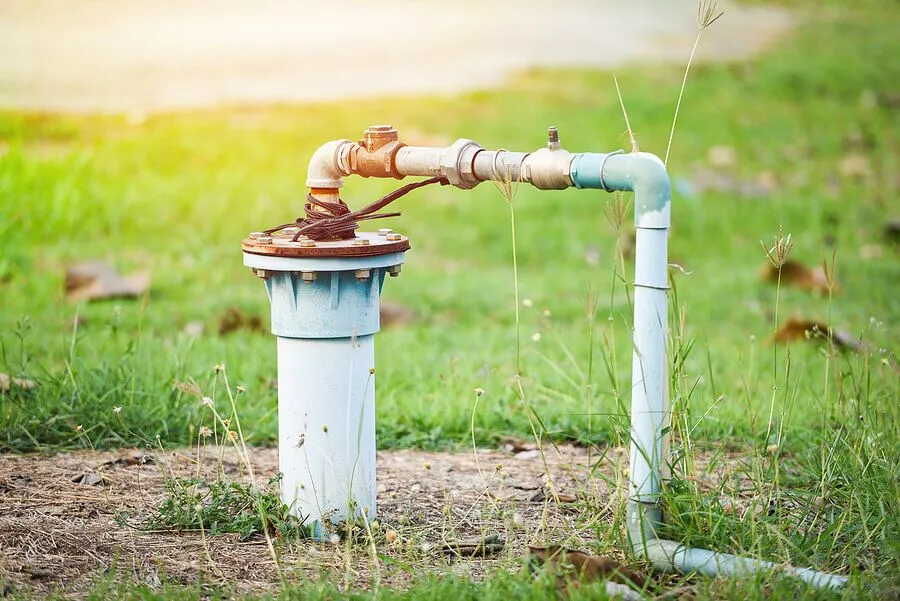
Reliable Solutions for Common Well Pump & Septic System Challenges
Table of Contents
ToggleKey Takeaways
- Trouble with a well pump or septic system often starts small. Early awareness and basic knowledge can prevent headaches and bigger repair bills.
- DIY troubleshooting can be safe and effective for minor issues, but serious concerns deserve a professional inspection to avoid health and safety risks.
- Long-term care protects property value, sustains high water quality, and ensures safety for residents and the wider community.
Essential Components of Well Pump & Septic Systems
Living outside a municipal grid comes with unique challenges and freedoms, especially regarding water supply and wastewater disposal. A well pump is vital in pulling groundwater into your home, typically using either a jet or submersible system based on well depth and household size. These pumps connect to a pressure tank that regulates flow into your pipes, ensuring constant water pressure for showers, laundry, and kitchen use. Conversely, a septic system manages all household wastewater using a multi-stage process in which solids settle to the bottom of a buried tank. At the same time, lighter material floats, and liquid effluent disperses to an underground drain field for soil and natural bacteria filtration.
Daily life is seamless and healthy when all these components work in harmony. Problems often arise from neglecting routine maintenance or lacking awareness about system design. Those who feel uncertain can benefit from consulting Indianapolis well pump & septic experts who regularly assess and service residential and small commercial systems. A deeper understanding of parts and processes is available through the EPA’s septic system basics, which describe each moving part and its vital maintenance intervals in straightforward language. By proactively learning and seeking professional insight, homeowners can prevent emergencies before they happen. This protects the home’s infrastructure and supports long-term environmental sustainability.
Warning Signs: Spotting Trouble Early
Spotting the earliest signs of well pump or septic issues helps prevent more serious failures. With well pumps, watch your faucets for sudden pressure drops, odd spurts of air, unusual thumping and clicking sounds when water runs, or shifts in water color and taste. Such changes are often the first sign of a weakening pump, an electrical issue with the pressure switch or tank, or sediment infiltration. Unchecked, these problems can lead to total outages and expensive emergency repairs.
Septic system problems can emerge more subtly at first. Slow or gurgling drains in several fixtures, sewage smells in your yard or home, unexplained lush spots on your lawn, and water pooling near the drain field are classic red flags. Each indicates a system reaching its limit, potentially from an overfull tank, blocked or damaged pipes, or soil saturation. According to recent reports on septic and groundwater failures, overlooked warning signs are a common cause of contamination events affecting entire neighborhoods. By staying alert and proactive, homeowners can mitigate health risks and environmental issues before they start.
DIY Troubleshooting for Common Issues
Many fundamental issues can be addressed safely at home with some knowledge and precaution. For well pumps, your first step should be to check the electrical service panel for tripped breakers or blown fuses, which are common after storms or surges. If all seems normal, a pump reset—following the manufacturer’s instructions—may restore function.
- Check faucet aerators and indoor traps for clogs, as debris or mineral buildup can mimic system-wide problems.
- For slow drains connected to the septic, verify that toilets are not blocked, and ensure no one has flushed materials like paper towels, wipes, or hygiene products, all of which can cause blockages and quickly impair a septic system.
- Avoid pouring harsh chemicals or commercial drain openers down drains. They can kill the beneficial bacteria needed for septic processing, leading to greater problems later.
Never attempt to open or physically pump out a septic tank unless you’re trained and adequately equipped. The gases can be life-threatening; tank damage or incorrect pumping can cause structural issues and contaminate groundwater. When in doubt, err on the side of caution—quick inspections and light troubleshooting are safe, but deeper problems should be left to professionals.
When to Call a Professional
Knowing when to call in a professional for your well or septic system isn’t just about convenience—it’s about protecting your home and health. While simple issues like a tripped breaker or clogged filter may be easily handled, recurring problems such as persistently low water pressure, murky or gritty water, unusual sounds near the pump, or failure to restore water after multiple resets usually point to deeper mechanical or structural failures in your pump, well, or pressure tank. Likewise, for septic systems, warning signs like sewage backing into drains, wastewater pooling in the yard, multiple clogged fixtures, or a system alarm that won’t deactivate signal urgent issues beyond DIY fixes.
Attempting complex repairs without the proper training and tools can worsen the situation and pose serious risks to groundwater quality and home safety. As a recent National Geographic report highlights, many homeowner-led septic and well repair attempts result in contamination events that harm entire neighborhoods and ecosystems. Professional technicians bring expertise and precision, minimizing costly errors and ensuring long-term reliability. Acting early preserves your property’s value and your community’s environmental health.
Effective Preventive Maintenance Tips
- Have your well and septic systems inspected annually by knowledgeable technicians, even without apparent problems.
- Arrange to pump the septic tank every three to five years to remove solids before they overflow into the drain field, with frequency depending on household size and water use.
- Distribute significant water uses, such as laundry or heavy showering, throughout the week rather than on the same day to reduce hydraulic stress on both systems.
- Direct rain gutters and sump pumps away from the drain field to prevent excess water from saturating the soil and impairing natural filtration.
- Keep a detailed log of all inspections, repairs, and pumping; this will make it easier to troubleshoot problems in the future and reassure home buyers of consistent maintenance.
These practical steps collectively extend the functional life and reliability of your well and septic setup. Simple daily choices—such as not dumping grease or paint down drains—can prevent the slow decline of your system and protect your water supply.
The Value of Long-Term System Care
Proactive maintenance goes beyond basic household chores—it’s a strategic approach that protects property value and minimizes long-term costs. Consistent care can yield especially significant returns for homes with healthy septic systems. Industry surveys from property inspectors and real estate agents show that homes with documented well and septic upkeep retain higher resale values and face fewer complications during financing and inspections. Lenders and buyers view a solid maintenance record as a sign of responsible ownership and long-term reliability.
The financial argument is straightforward: replacing a failed septic system can run into the tens of thousands of dollars, while routine inspections and timely tank pump-outs cost comparatively little. In addition to cost savings, proactive maintenance helps avert potential health hazards, including groundwater contamination and indoor water damage, which can render a home temporarily uninhabitable or permanently devalued. Preventing these risks maintains marketability and ensures a safe, functional living environment. Regular well and septic maintenance also offers flexibility—supporting future remodeling projects, landscaping plans, or adding accessory units—without the fear of overburdening outdated infrastructure.
Maintaining Well Water Quality
Consistently clean water is essential for drinking, bathing, and cooking. Annual testing for bacteria, nitrates, and, where relevant, heavy metals or chemicals should be a household routine. Some municipalities and counties provide free testing programs, while certified labs offer comprehensive test kits and clear guidance on interpreting results. In regions with agricultural runoff or industrial history, extra vigilance is vital—one test per year may not be enough during high water events like floods.
- Install a sanitary, tamper-proof cap on your well to avoid intrusion by pests or surface contaminants.
- Keep hazardous chemicals, garden fertilizers, and fuel away from the wellhead and drain field to reduce contamination risks.
- Consider point-of-use water filtration solutions for added security, particularly for households with special health considerations.
- Review recommendations and safety standards in resources like the EPA’s septic and well safety guide.
These precautions shield your water from toxins and bacteria and strengthen the system’s resilience during storms or unexpected contamination events. Regular monitoring supports ongoing health and can help catch problems before they affect your entire system.
Additional Resources and Further Reading
- Check with local cooperative extension offices for classes, workshops, or webinars tailored for rural water and septic management.
- Bookmark authoritative guides like those offered by the EPA and keep up with news and research from outlets like National Geographic for the latest trends and solutions on groundwater and septic topics.
- Sign up for your county’s health department reminders to stay on track with annual inspections and water quality testing.
Taking a proactive approach to home maintenance allows homeowners to avoid costly surprises and protect their investment over the long term. Small, consistent actions—such as seasonal inspections, timely repairs, and routine servicing—help extend the lifespan of essential systems and prevent minor issues from becoming major emergencies. Relying on trusted professionals for complex tasks ensures problems are addressed correctly the first time, reducing the risk of repeat failures. This combination of diligence and expert guidance keeps everything running smoothly and efficiently. In the end, homeowners gain long-term savings and the peace of mind that comes from a well-maintained home.






